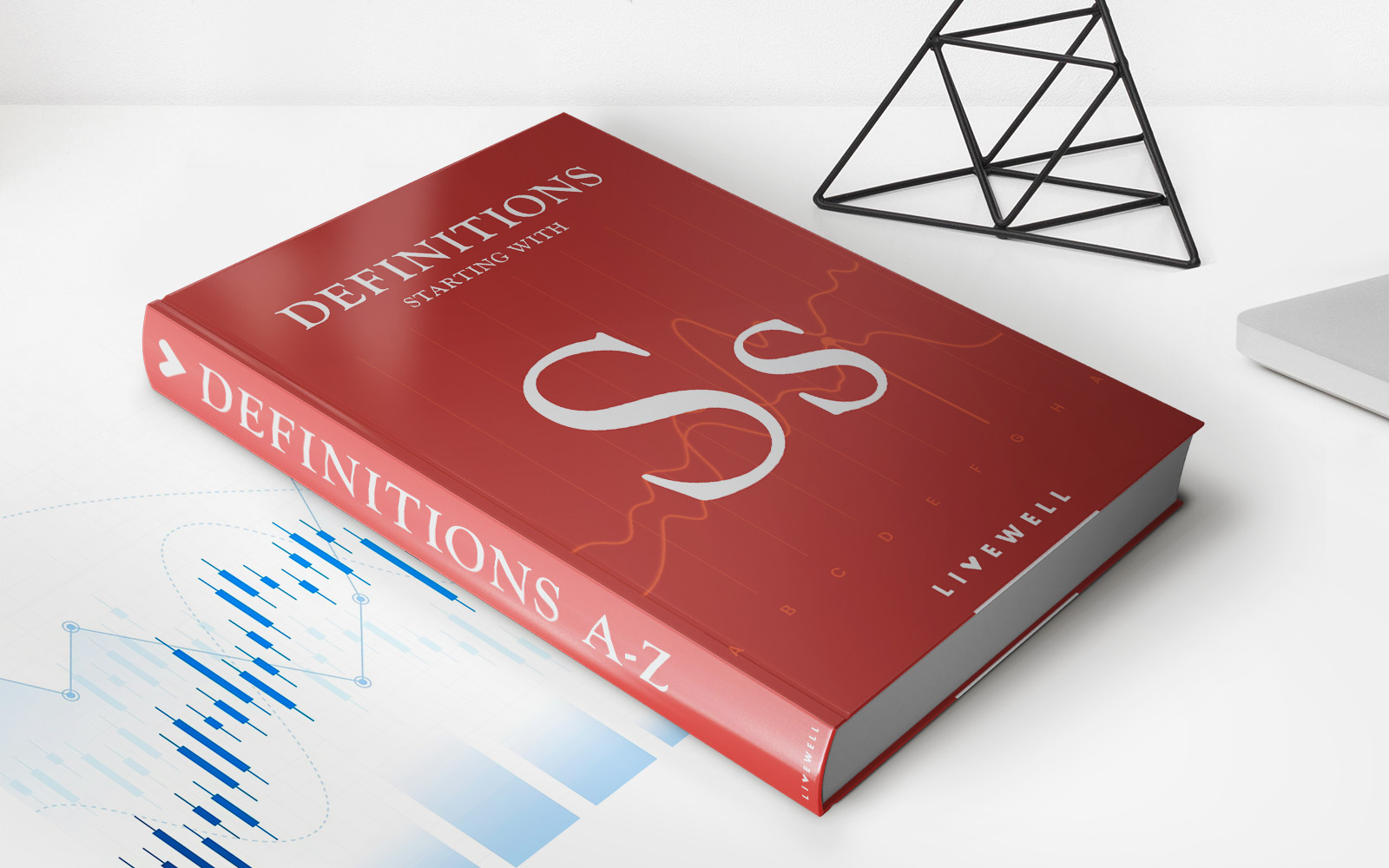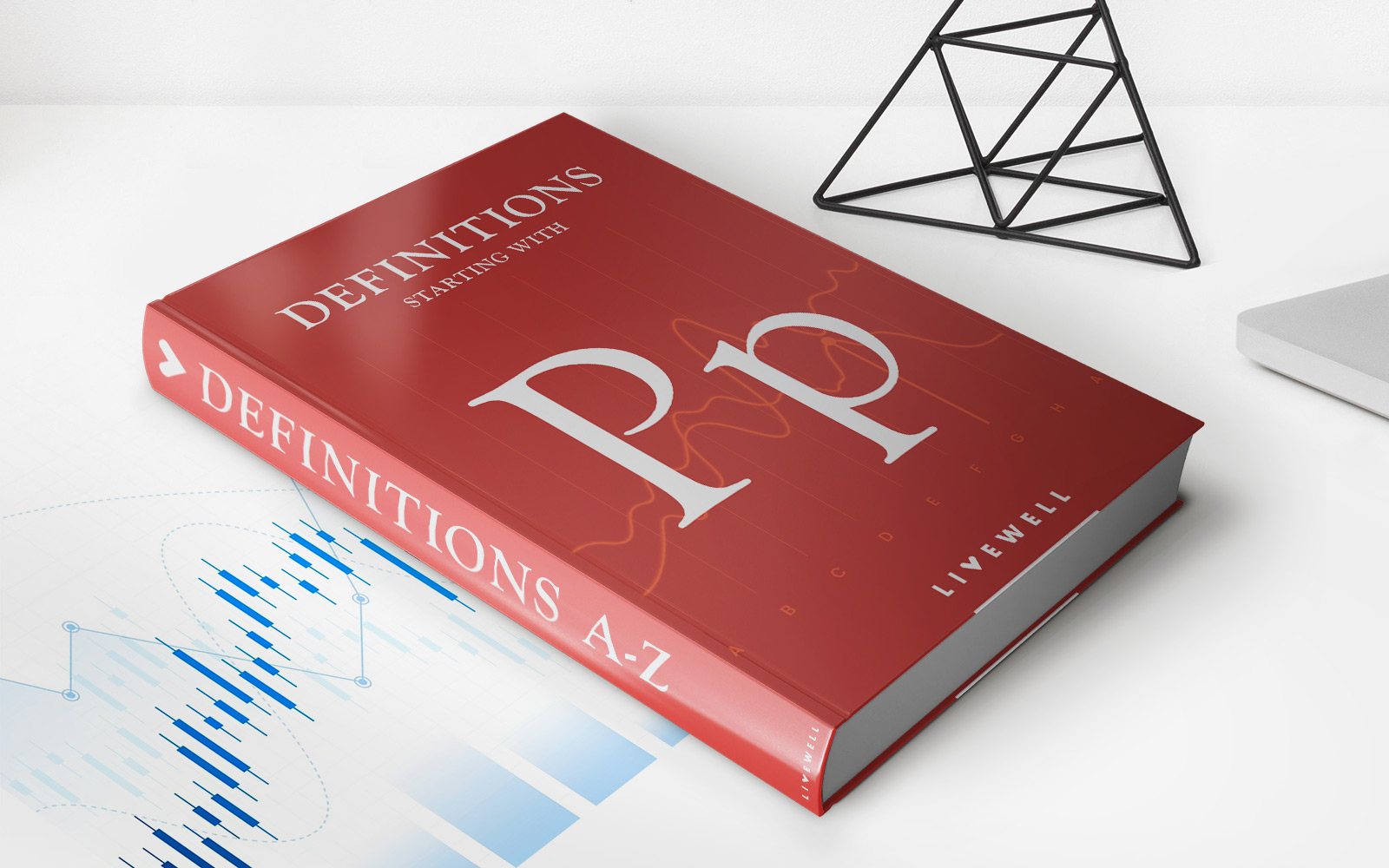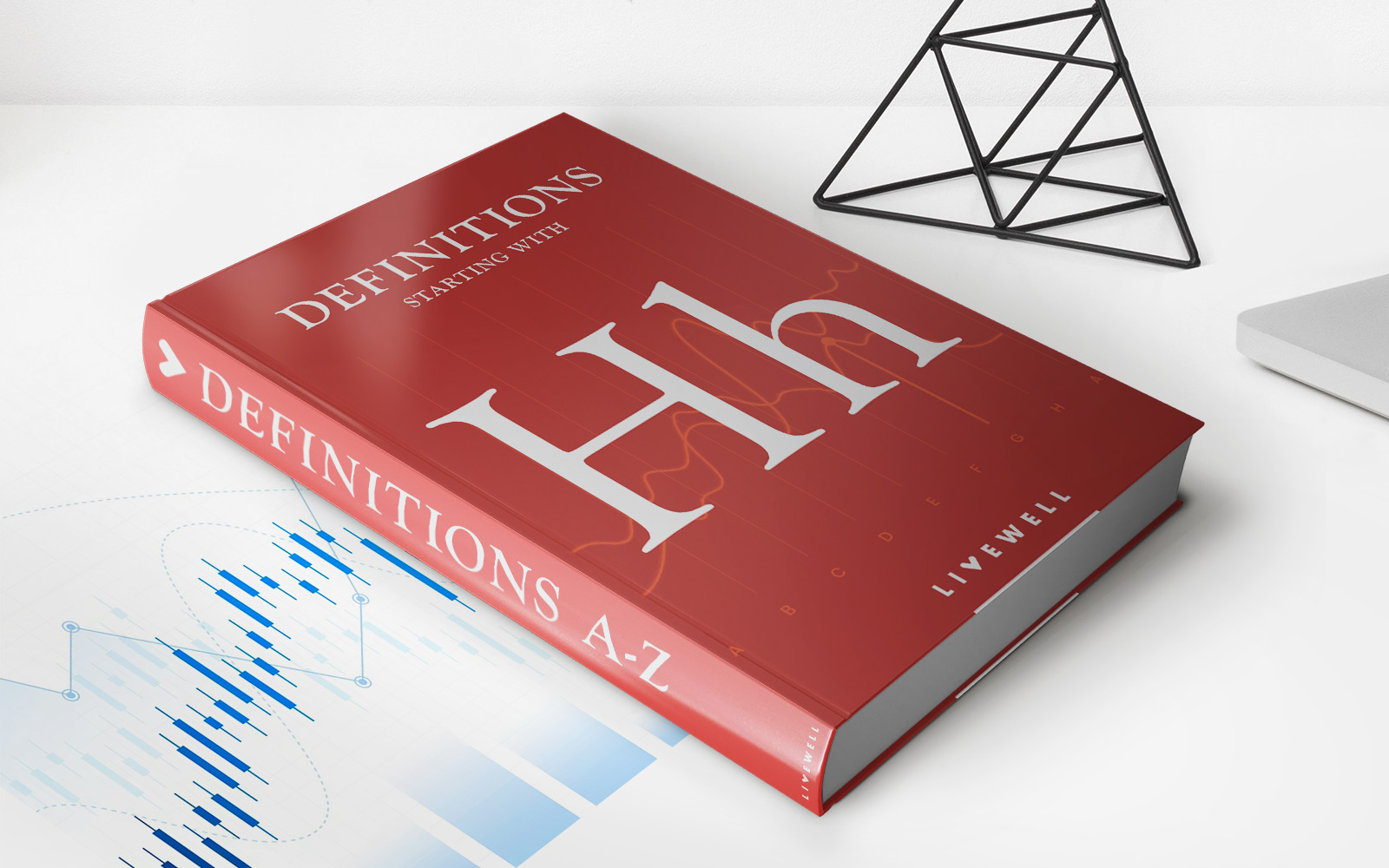Home>Finance>What Happens To My Life Insurance When I Retire?


Finance
What Happens To My Life Insurance When I Retire?
Published: November 10, 2023
Discover what happens to your life insurance when you retire and how it impacts your finances. Get expert advice on managing your retirement and insurance plans.
(Many of the links in this article redirect to a specific reviewed product. Your purchase of these products through affiliate links helps to generate commission for LiveWell, at no extra cost. Learn more)
Table of Contents
- Introduction
- Understanding Life Insurance
- Types of Life Insurance
- How Life Insurance Works
- Retirement and Life Insurance
- Options for Life Insurance at Retirement
- Cash Value Life Insurance
- Surrendering Life Insurance Policies
- Converting Life Insurance Policies
- Using Life Insurance for Retirement Income
- Tax Implications of Life Insurance in Retirement
- Conclusion
Introduction
As retirement approaches, it’s natural to start thinking about the various financial aspects and how they will impact your life. One key consideration is what will happen to your life insurance when you retire. Life insurance is often purchased to provide financial protection for your loved ones in the event of your untimely death. But as you transition into retirement, your financial needs and priorities may change.
In this article, we will explore the implications of life insurance when entering retirement and the options available to you. We’ll discuss the different types of life insurance policies, how they work, and the potential choices you have when it comes to your life insurance coverage.
Understanding life insurance is the first step in determining its relevance to your retirement plans. Life insurance is a contract between you and an insurance company, where you pay regular premiums in exchange for a death benefit that is paid out to your beneficiaries upon your passing. It is designed to provide financial support to your loved ones, ensuring that they can maintain their quality of life and meet their financial obligations.
There are different types of life insurance policies available, including term life insurance, whole life insurance, and universal life insurance. Term life insurance offers coverage for a specific period, typically 10 to 30 years, whereas whole life insurance provides lifetime coverage with a cash value component. Universal life insurance combines a death benefit with a flexible savings component.
When it comes to retirement, the role of life insurance may change. While the need for life insurance may diminish as you enter retirement, it can still serve multiple purposes. For instance, it can provide a financial safety net for your spouse or dependents, cover any outstanding debts, or fund end-of-life expenses such as funeral costs.
In the next sections, we will delve deeper into the options available to you regarding your life insurance coverage as you transition into retirement. Whether it’s cashing in your policy, converting it to a different type of coverage, or using it for retirement income, understanding the possibilities will help you make informed decisions that align with your specific needs and goals.
Understanding Life Insurance
Before making decisions about your life insurance during retirement, it’s important to have a clear understanding of how life insurance works. Life insurance is a contract between you and an insurance company, where you agree to pay regular premiums in exchange for a death benefit that is paid out to your beneficiaries upon your passing.
Life insurance policies are designed to provide financial protection and peace of mind to your loved ones in the event of your death. The death benefit can be used to cover various expenses, such as funeral costs, outstanding debts, mortgage payments, and daily living expenses.
There are different types of life insurance policies available, each with its own features and benefits. The most common types include:
- Term Life Insurance: This type of policy provides coverage for a specific term, typically ranging from 10 to 30 years. It offers a straightforward death benefit and is generally more affordable compared to other types of life insurance.
- Whole Life Insurance: Unlike term life insurance, whole life insurance provides coverage for the entire duration of your life. It also has a cash value component, which means that a portion of your premiums accumulates as an investment that you can borrow against or withdraw.
- Universal Life Insurance: Universal life insurance combines a death benefit with a flexible savings component. It allows you to adjust your premium payments and death benefit amount to suit your changing needs over time.
It’s essential to review your life insurance policy documents carefully to understand the terms and conditions, coverage limits, and any optional riders or add-ons that may be included. Additionally, it’s advisable to periodically assess your life insurance coverage to ensure that it aligns with your financial goals and circumstances.
Life insurance premiums are determined based on several factors, including your age, health, occupation, and lifestyle. Generally, younger individuals and those in good health pay lower premiums compared to older individuals or those with pre-existing medical conditions.
Life insurance policies typically come with a beneficiary designation, allowing you to specify who will receive the death benefit upon your passing. It’s important to regularly review and update your beneficiary designation to ensure that it reflects your current wishes.
By understanding the basics of life insurance, including the different types of policies available and how they operate, you can make more informed decisions about your coverage as you approach retirement.
Types of Life Insurance
When it comes to life insurance, there are several types of policies available to meet different financial needs and goals. Understanding the differences between these types can help you choose the right coverage for your retirement years.
- Term Life Insurance: Term life insurance provides coverage for a specified term, such as 10, 20, or 30 years. It offers a death benefit to your beneficiaries if you pass away during the term of the policy. Term life insurance is often the most affordable option, making it popular among individuals who need coverage for a specific period. However, it does not accumulate cash value over time.
- Whole Life Insurance: Whole life insurance provides coverage for your entire lifetime. It offers a death benefit to your beneficiaries and accumulates a cash value component over time. The cash value can be accessed through loans or withdrawals, and it may also earn dividends, depending on the policy terms. Whole life insurance premiums are typically higher than those of term life insurance, but the policy provides lifetime coverage and potential cash value growth.
- Universal Life Insurance: Universal life insurance offers flexibility by allowing you to adjust the death benefit and premium payments over time. It also accumulates a cash value, which you can tap into if needed. Universal life insurance offers more control and customization compared to whole life insurance. However, it requires careful monitoring as changes in premium payments or interest rates can affect the policy’s performance.
- Variable Life Insurance: Variable life insurance combines a death benefit with investment options. Policyholders have the ability to allocate a portion of their premiums to different investment accounts, such as stocks or bonds. The cash value of the policy fluctuates based on the performance of these investments. Variable life insurance offers potential for higher returns but also carries more risk compared to other types of life insurance.
When considering which type of life insurance is suitable for your retirement needs, it’s important to evaluate factors such as your financial goals, budget, risk tolerance, and the length of coverage required. Term life insurance may be a suitable option if you have specific financial obligations like a mortgage or supporting dependents during a specific period. On the other hand, whole life insurance or universal life insurance can provide lifelong coverage and potential cash value growth.
It’s advisable to consult with a financial advisor or insurance professional who can assess your individual circumstances and help you choose the most appropriate type of life insurance for your retirement years.
How Life Insurance Works
Life insurance is a contract between you and an insurance company, providing financial protection for your loved ones in the event of your death. Understanding how life insurance works can help you make informed decisions about your coverage during retirement.
When you purchase a life insurance policy, you agree to pay regular premiums to the insurance company. In return, the insurance company promises to pay a death benefit to your designated beneficiaries upon your passing. The death benefit is typically a lump sum payment that can be used to cover various expenses, such as funeral costs, outstanding debts, mortgage payments, and ongoing financial needs.
The amount of the death benefit is typically determined when you first apply for the policy and is based on factors such as your age, health, and desired coverage amount. You have the flexibility to choose the coverage amount that best suits your needs and budget.
Life insurance policies have different lengths of coverage. Term life insurance provides coverage for a specific term, such as 10, 20, or 30 years, while whole life insurance offers coverage for your entire lifetime. Universal life insurance provides more flexibility, allowing you to adjust the coverage and premiums over time.
Life insurance policies can also accumulate a cash value component, depending on the type of policy. Whole life insurance and universal life insurance policies typically have a cash value component, while term life insurance policies do not.
The cash value is a savings component of the policy that grows over time. A portion of your premium payments goes towards the cash value, which can accumulate tax-deferred. The cash value can be accessed through policy loans or withdrawals, providing a source of funds that can be used for various purposes, such as supplementing retirement income or covering unexpected expenses.
It’s important to note that any outstanding loans or withdrawals from the policy may reduce the death benefit payable to your beneficiaries. Therefore, careful consideration should be given to accessing the cash value and its impact on the overall coverage.
In summary, life insurance works by providing financial protection for your loved ones upon your passing. By paying regular premiums, you ensure that a death benefit will be paid out to your designated beneficiaries. The coverage amount, policy length, and presence of a cash value component depend on the type of life insurance policy you choose.
Determining the right life insurance coverage for retirement requires assessing your financial goals, budget, and individual circumstances. Consulting with a financial advisor or insurance professional can provide valuable guidance in selecting the most suitable life insurance policy for your retirement needs.
Retirement and Life Insurance
Retirement is a significant milestone that often brings about changes in financial priorities and needs. As you transition into retirement, it is important to assess the role of life insurance in your overall retirement plan.
One of the key considerations is whether you still need life insurance during retirement. The need for life insurance may diminish as you enter retirement because you may have fewer financial obligations and dependents to support. However, there are several factors to consider when evaluating your life insurance needs:
- Dependents: If you still have dependents who rely on your financial support, such as a spouse or disabled child, life insurance can provide a financial safety net to ensure their well-being in the event of your passing.
- Debts and Financial Obligations: If you have outstanding debts, such as a mortgage or car loan, life insurance can help cover these obligations, preventing a financial burden for your loved ones.
- End-of-Life Expenses: Life insurance can be used to cover funeral costs and other end-of-life expenses, relieving your family from the financial burden during a difficult time.
- Inheritance Planning: If you want to leave a financial legacy for your loved ones or make charitable contributions, life insurance can be an effective tool for estate planning and wealth transfer.
If you determine that life insurance is still necessary during retirement, you have multiple options available to you:
- Keep Your Existing Policy: If you already have a life insurance policy in place, you can continue paying the premiums as agreed upon and maintain your coverage.
- Review Coverage Amount: Assess your current coverage amount to ensure it aligns with your retirement goals and financial obligations. You may need to adjust the coverage level based on your changing circumstances.
- Convert Your Policy: Depending on the type of life insurance policy you have, it may be possible to convert it to a different type, such as converting a term life insurance policy to a permanent policy that offers lifetime coverage.
- Explore Long-Term Care Riders: Some life insurance policies offer riders or add-ons that provide coverage for long-term care expenses, addressing potential future healthcare needs.
As with any financial decision, it is crucial to consider your overall retirement plan, including your income sources, expenses, and retirement goals. Consult with a financial advisor or insurance professional who can provide guidance tailored to your specific needs and circumstances.
Ultimately, determining the role of life insurance in your retirement plan requires evaluating your financial situation, considering the needs of your loved ones, and making decisions that provide peace of mind in this new chapter of your life.
Options for Life Insurance at Retirement
When approaching retirement, it’s important to evaluate your life insurance and consider the available options that align with your changing financial needs. Here are some common paths to explore for your life insurance coverage:
- Keep Your Existing Policy: If you still have dependents or financial obligations, maintaining your current life insurance policy may be the best choice. By continuing to pay the premiums, you ensure that your loved ones are protected in the event of your passing.
- Adjust Coverage Amount: Assess your coverage amount to determine if it aligns with your retirement goals and financial circumstances. You may find that you need less coverage as you enter retirement, especially if your financial obligations have decreased over time.
- Convert Your Policy: Depending on the type of life insurance policy you have, you may have the option to convert it into a different type of policy. For example, you could convert a term life insurance policy into a permanent life insurance policy that offers lifetime coverage.
- Consider Long-Term Care Coverage: As you age, the potential need for long-term care increases. Some life insurance policies offer riders or add-ons that provide coverage for long-term care expenses, ensuring that you have financial protection in case you require assisted living or medical care in the future.
- Review Premium Payments: Evaluate your ability to continue paying premiums during retirement. If the premiums become a financial strain, you may need to adjust your coverage or seek alternative options.
- Shop for New Policies: Retirement presents an opportunity to reevaluate your life insurance needs and explore new policies. You can compare quotes and options from different insurance providers to ensure you have the most suitable coverage for this new phase of life.
It’s important to consider your overall financial goals, retirement income sources, and current health status when choosing the best option for your life insurance at retirement. Consulting with a financial advisor or insurance professional can provide valuable insights and help you make informed decisions.
Additionally, it’s essential to review your life insurance policy regularly, especially when significant life events occur, such as the birth of a child, marriage, or divorce. Reassessing your coverage ensures that it continues to meet your evolving needs.
By evaluating your life insurance options at retirement, you can determine the most appropriate path that provides financial protection for your loved ones and aligns with your overall retirement plan. Make informed decisions that give you peace of mind and confidence in your financial future.
Cash Value Life Insurance
Cash value life insurance refers to a type of life insurance policy that not only provides a death benefit to your beneficiaries but also accumulates a cash value component over time. This cash value grows based on the premiums you pay and can be accessed during your lifetime, offering additional flexibility and potential financial benefits.
There are two main types of cash value life insurance policies: whole life insurance and universal life insurance.
Whole Life Insurance: With whole life insurance, a portion of your premium payments goes towards the death benefit coverage, while another portion goes into a cash value account. This cash value grows over time at a predetermined interest rate set by the insurance company. The cash value can accrue tax-deferred and can be accessed through policy loans or withdrawals. Additionally, some whole life policies may pay dividends, which can be utilized to purchase additional coverage or received as cash.
Universal Life Insurance: Universal life insurance offers more flexibility compared to whole life insurance. It allows policyholders to adjust the premium payments and death benefit amount, within certain limits, to fit their changing needs. Universal life insurance also accumulates cash value based on the premiums paid and the interest credited to the policy. The policyholder can access the cash value, subject to policy terms and surrender charges. Universal life insurance policies typically offer more transparency and control over the cash value component.
The cash value in a cash value life insurance policy can serve various purposes during retirement:
- Supplement Retirement Income: The cash value can be accessed through policy loans or withdrawals to supplement your retirement income. It can provide a source of funds that can be used for unexpected expenses, travel, or other financial needs.
- Address Long-Term Care Expenses: Some cash value life insurance policies offer riders or add-ons that allow part of the cash value to be used to cover long-term care expenses. This can provide an additional layer of financial protection in case you require assisted living or medical care in the future.
- Estate Planning: The cash value can be utilized as part of your estate planning strategy. It can be used to leave a financial legacy for your loved ones or cover any estate taxes or expenses, ensuring a smooth transfer of wealth.
It’s important to note that accessing the cash value can have implications for the death benefit payable to your beneficiaries. Any outstanding loans or withdrawals may reduce the death benefit, so careful consideration should be given to balancing your current needs with the long-term implications.
Consulting with a financial advisor or insurance professional is recommended to fully understand the features and benefits of cash value life insurance and how it aligns with your retirement goals. They can help you navigate the complexities of these policies and make informed decisions that suit your financial needs.
Surrendering Life Insurance Policies
Surrendering a life insurance policy involves canceling the policy and receiving the cash surrender value, which is the accumulated cash value minus any applicable fees or surrender charges. This option may be considered when your life insurance policy no longer aligns with your financial goals or you no longer have the need for coverage.
Here are some important points to consider when contemplating surrendering your life insurance policy:
- Cash Surrender Value: When you surrender your policy, you will receive the cash surrender value, which represents the amount of cash value that has accumulated in the policy. The surrender value may be taxable if it exceeds the amount you paid in premiums.
- Surrender Charges: Some life insurance policies, particularly cash value policies, may have surrender charges or surrender periods. These charges are incurred when you surrender the policy within a certain timeframe, typically during the initial years of the policy. Surrender charges are intended to recoup the costs associated with issuing the policy and can significantly reduce the cash surrender value.
- Loss of Coverage: When you surrender your life insurance policy, you will no longer have coverage. This means that your beneficiaries will not receive a death benefit in the event of your passing. It’s important to evaluate your financial situation and consider if surrendering the policy leaves you and your loved ones adequately protected.
- Financial Needs: Surrendering a life insurance policy can provide a lump sum of cash that can be used to meet immediate financial needs or pursue other investment opportunities. However, it’s important to carefully consider alternative options and consult with a financial advisor to ensure that surrendering the policy is the best choice for your specific circumstances.
- Tax Implications: Surrendering a life insurance policy can have tax implications. The cash surrender value that exceeds the amount you paid in premiums may be subject to income taxes. It’s important to consult with a tax advisor to understand the tax implications before making a decision.
Surrendering a life insurance policy should be carefully evaluated and considered within the context of your overall financial plan. It’s recommended to review the policy terms and consult with a financial advisor or insurance professional who can provide guidance based on your individual circumstances.
Alternatives to surrendering a policy may include:
- Reducing the coverage amount of the policy.
- Adjusting the premium payments or policy benefits.
- Exploring the option to convert the policy to a different type that better suits your needs.
- Considering a policy loan against the cash value.
Each individual’s situation is unique, and it’s important to carefully evaluate the costs, benefits, and potential consequences before making a decision regarding surrendering a life insurance policy.
Converting Life Insurance Policies
Converting a life insurance policy involves changing the current policy to a different type of policy, typically within the same insurance company. This option allows policyholders to modify their coverage to better align with their evolving needs and financial goals. Converting a life insurance policy can offer flexibility and additional benefits compared to surrendering the policy altogether. Here are some key points to consider when contemplating converting your life insurance policy:
- Type of Conversion: The type of policy conversion available depends on the specific terms and options provided by your insurance company. Common types of conversions include converting term life insurance to permanent life insurance or converting one type of permanent life insurance policy to another.
- Permanent Coverage: Converting to a permanent life insurance policy ensures that you have coverage for your entire lifetime, as opposed to a term policy that only provides coverage for a specific period. Permanent policies, such as whole life insurance or universal life insurance, can build cash value over time and offer additional benefits like the potential for dividends.
- Adjustment of Premiums: Converting a policy may result in a change in premiums. Depending on the policy type and coverage amount, the premiums may increase or decrease compared to the original policy. It’s important to evaluate the affordability of the new premiums and whether they align with your budget.
- Health Considerations: Converting a policy may require undergoing a medical underwriting process. This means that your current health status will be assessed, which could impact the premium rates or eligibility for the new policy. If your health has deteriorated since you initially obtained the policy, it’s important to consider the potential impact on the conversion process.
- Additional Benefits: Converting a policy can provide access to additional benefits and features. For example, a converted policy may offer options for long-term care coverage or the potential to participate in the insurance company’s investment gains through dividends. Evaluate the specific benefits offered by the new policy and assess their potential value to your overall financial plan.
Converting a life insurance policy can be a beneficial option for policyholders who want to maintain coverage while adapting to changing financial needs. Before making any decisions, it’s essential to consult with a financial advisor or insurance professional who can assess your individual situation and provide guidance based on your specific needs and goals.
Comparing the costs, benefits, and features of the new policy with your existing coverage is crucial in determining if a policy conversion is the right choice for you. Careful consideration and analysis of the potential long-term impact on your coverage and finances will help you make an informed decision tailored to your circumstances.
Using Life Insurance for Retirement Income
While life insurance is primarily designed to provide a death benefit to your beneficiaries, it can also be utilized as a source of retirement income. Depending on the type of life insurance policy you have, there may be options to tap into the cash value or structure the policy to provide income during your retirement years.
Here are some strategies for using life insurance for retirement income:
- Policy Loans: If you have a cash value life insurance policy, such as whole life or universal life insurance, you may have the option to borrow against the cash value through a policy loan. These loans can provide a source of tax-free income during retirement. Keep in mind that loans need to be repaid with interest, and any outstanding loans at the time of your passing may reduce the death benefit payable to your beneficiaries.
- Withdrawals: Depending on the terms of your life insurance policy, you may be able to withdraw funds from the cash value of the policy. Withdrawals up to the total amount of premiums paid are typically tax-free. However, withdrawals exceeding the premiums paid may be subject to taxes, so it’s important to consult with a tax professional to understand the tax implications.
- Annuitization: Some life insurance policies offer the option to convert the cash value into an annuity, which provides a guaranteed stream of income for a specific period or for the rest of your life. An annuity can serve as a supplemental income source during retirement, providing regular payments to support your financial needs.
- Partial Surrenders: In certain life insurance policies, you may have the option to make partial surrenders of the cash value. This involves withdrawing a portion of the cash value while keeping the policy in force. Partial surrenders can provide an immediate source of funds without fully surrendering the policy.
- Structured Payouts: If you have a sizeable cash value in your life insurance policy, you can work with your insurance company to structure a payout schedule that aligns with your retirement income needs. This can involve regular withdrawals or annuitization over a specified period to provide a steady income stream.
When considering using life insurance for retirement income, it’s important to carefully evaluate the potential impact on the death benefit and the long-term sustainability of your retirement plan. Balance the need for income with the desire to leave a financial legacy for your beneficiaries.
Consulting with a financial advisor or insurance professional can help you navigate the options, assess the tax implications, and determine the most suitable strategy for using your life insurance policy as a retirement income source. They can work with you to ensure that your retirement plan aligns with your financial goals and provides the income security you need.
Tax Implications of Life Insurance in Retirement
When it comes to life insurance in retirement, it’s important to understand the potential tax implications associated with your policy. The tax treatment of life insurance depends on various factors, including the type of policy, the premiums paid, and the policy benefits received. Here are some key tax considerations:
- Premium Payments: In general, premium payments made towards a life insurance policy are not tax-deductible. This means that you cannot claim them as a deduction on your annual tax return.
- Death Benefit: One of the primary benefits of life insurance is the death benefit paid out to your beneficiaries upon your passing. In most cases, the death benefit is received income tax-free. Your beneficiaries typically do not have to report the death benefit as taxable income. However, if the death benefit is received as a lump sum and held for investment purposes, any interest or investment gains generated from it may be subject to taxes.
- Cash Value Growth: If you have a cash value life insurance policy, such as whole life or universal life insurance, the cash value component grows over time. This growth is typically tax-deferred, meaning you don’t pay taxes on it until you withdraw or surrender the cash value. However, any gains from withdrawing or surrendering the cash value that exceed the total premiums paid may be subject to taxes.
- Policy Loans: Taking policy loans against the cash value of your life insurance policy is generally tax-free. The loan proceeds are not considered taxable income since you are borrowing against your own cash value. However, it’s important to note that any outstanding loans at the time of your passing may be deducted from the death benefit payable to your beneficiaries.
- Long-Term Care Riders: Some life insurance policies offer riders or add-ons that provide coverage for long-term care expenses. The tax treatment of these riders may vary, so it’s crucial to consult with a tax professional to understand the potential tax implications.
It’s important to note that tax laws and regulations are subject to change, and their impact on life insurance in retirement can vary based on your specific circumstances. Consulting with a tax advisor or financial professional who specializes in insurance can provide invaluable guidance tailored to your individual situation.
It’s also worth noting that there can be estate tax implications for high net worth individuals. Life insurance death benefits may be subject to estate taxes if the policyholder’s total estate exceeds certain thresholds set by the government. Estate planning, including trust arrangements, can help mitigate the impact of estate taxes.
Understanding the tax implications of your life insurance policy in retirement allows you to make informed decisions and effectively incorporate it into your overall financial plan. Stay updated with the latest tax laws, work with professionals, and evaluate the potential impact on your retirement income and estate planning needs.
Conclusion
As you approach retirement, it’s important to assess your life insurance coverage and understand its implications for your financial well-being during this new phase of life. While the need for life insurance may change, there are still considerations to keep in mind to ensure that you and your loved ones are adequately protected.
Understanding the different types of life insurance policies, such as term life insurance, whole life insurance, and universal life insurance, allows you to make informed decisions about the coverage that best suits your needs and goals. Evaluating the role of life insurance in retirement involves considering factors such as dependents, financial obligations, and end-of-life expenses.
Options for dealing with life insurance at retirement include keeping your existing policy, adjusting the coverage amount, converting the policy to a different type, or utilizing long-term care riders. Each option has its own benefits and considerations, and consulting with a financial advisor or insurance professional can provide guidance tailored to your circumstances.
For those with cash value life insurance policies, accessing the accumulated cash value can be a strategy to supplement retirement income, address long-term care expenses, or support estate planning goals. However, it’s important to be aware of the tax implications and the potential impact on the death benefit.
Surrendering a life insurance policy is another option to consider, but it should be carefully evaluated in terms of the cash surrender value, surrender charges, loss of coverage, and potential tax ramifications.
Converting a life insurance policy may be suitable for those seeking different coverage or additional benefits. Understanding the conversion process and its impact on premiums, health considerations, and additional benefits is crucial before making a decision.
Lastly, the tax implications of life insurance in retirement can vary depending on the type of policy, premiums paid, death benefits received, and cash value growth. Consulting with tax professionals can help clarify the specific tax considerations for your situation.
In conclusion, reviewing and adjusting your life insurance coverage during retirement is essential to ensure that it aligns with your financial goals and provides the necessary protection for you and your loved ones. By understanding the various options and potential implications, you can make informed decisions that contribute to your financial security and peace of mind in this new chapter of your life.














